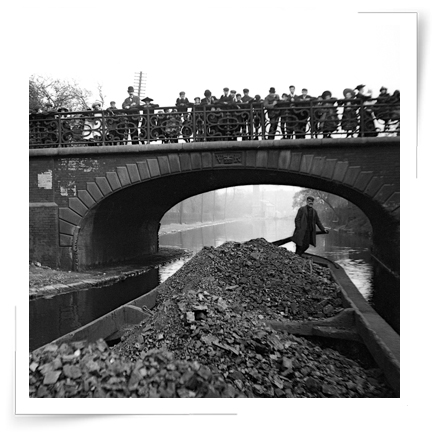The canal and river network turned Stratford into an industrial district (you can see some of the most famous industries at this link). But by the mid 19th century Britain’s 4,000-mile-long canal network had increasing competition from that other marvel of the Industrial Revolution, the steam locomotive train.
Railways were just as good at carrying bulk cargoes as barges, and could do so much more quickly and reliably. A horse-drawn barge could average about 2.5 miles per hour, while even a slow goods train could travel the same distance in just a few minutes, and deliver to a timetable.



